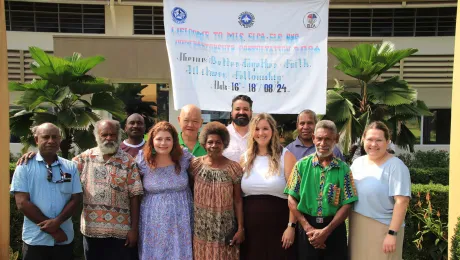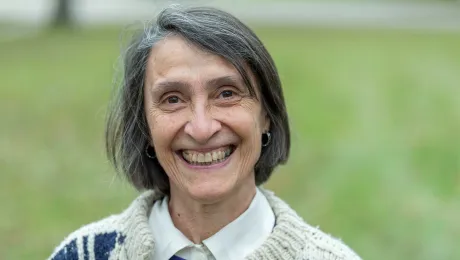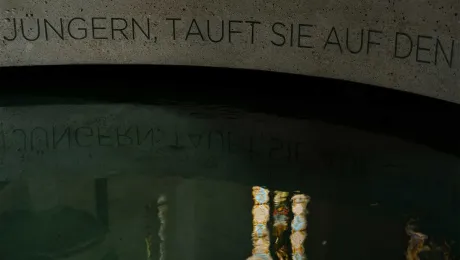
ELCA Global Mission executive director, Rev. Dr Rafael Malpica Padilla (third from the left) with Africa Lutheran church leaders during a session of the Pentecost Sunday celebratory worship in Marangu, Tanzania. Photo: LWF/Allison Westerhoff
The recent anniversary gathering of African Lutheran churches included sister churches from around the world. Delegates from the Evangelical Lutheran Church of America found that when you are on top of a mountain, you can see far beyond your normal vision - but at some point you have to come down and work. Southern Africa communictor Allison Westerhoff reports.
Lutheran leaders including heads of churches and other clergy, theological institute educators, women, youth and communicators, recently met in Moshi, Tanzania for the 60th anniversary of the first all-Africa Lutheran consultation. The 20-25 May consultation and commemoration explored challenging issues that Africa still faces today, as well as how far the church has come since that first meeting in November 1955 at the base of Mount Kilimanjaro in Marangu, Tanzania.
The gathering included representatives of global partners from among The Lutheran World Federation (LWF) member churches, such as the Evangelical Lutheran Church in America (ELCA). Rev. Dr Philip Knutson, ELCA regional representative for Southern Africa, reflected on the future of the church as a South African, American and ELCA representative.
For Knutson, one of the most moving events was when Harold Minja and Dawson Chonjo climbed Mt Kilimanjaro to raise awareness about climate change. “Mt Kilimanjaro is beautiful but troubled because of climate change,” he explained. “It’s a symbol of hope and vision. When you are on top [of a mountain], you can see far beyond your normal vision and have to come down and get to work.”
He described the Global Young Reformers Network as a very important aspect of the LWF’s efforts to define what it means to be Lutheran today for youth and adult members of the communion. The presence of Minja and Chonjo at the conference was a reminder that this meeting was not just a reflection of the past, but a vision of the future.
“Every church has something to give and receive,” said Knutson. He emphasized the need to work together as a global church on issues of gender inequality, injustice, exploitation, corruption, climate change and oppression, and to find a creative alternative that will build lasting change. “It’s not just nice to be together, it’s right.”
Freedom and unity
Rev. Dr Malpica Padilla, ELCA Global Mission executive director, observed that “the creative tension between freedom and unity was extremely important,” during the first meeting at Marangu. “The church must be an agent of change and service.”
With the freedom of connectivity today through social media and technology, “it is easier to honor our ties of baptism as one body of Christ,” he said. But this interconnectivity “should not just be reserved for our Lutheran church, it should extend towards other churches, governments, and other nations. The African youth of the church were able to see a deep and important history through the conference. Now, they must lead the way towards change in the future using their resources and the global community.”
Padilla shared his views on issues that are relevant for the Lutheran churches in Africa and globally. The 2015 Marangu conference had allowed the African Lutheran leaders to climb a challenging slope of the past 60 years and see how far the church has progressed. From the top of the mountain the bishops, pastors, youth, and women, all saw what challenges lie ahead. And now, as the representatives return to their homes, it’s time to get to work, he added.
The celebratory Pentecost Sunday worship at the Marangu Teachers College grounds included special recognition of those who were either born in 1955, baptized that year or participated in the historic gathering of African Lutherans. For Knutson, born 60 years ago in South Africa, where his parents were serving as missionaries, it was a great honor to take part in this year’s anniversary meeting.
(Allison Westerhoff is a member of the African Lutheran Information and Communication Network [ALCINET] and works as a communications officer for the Lutheran Communion in Southern Africa.)


